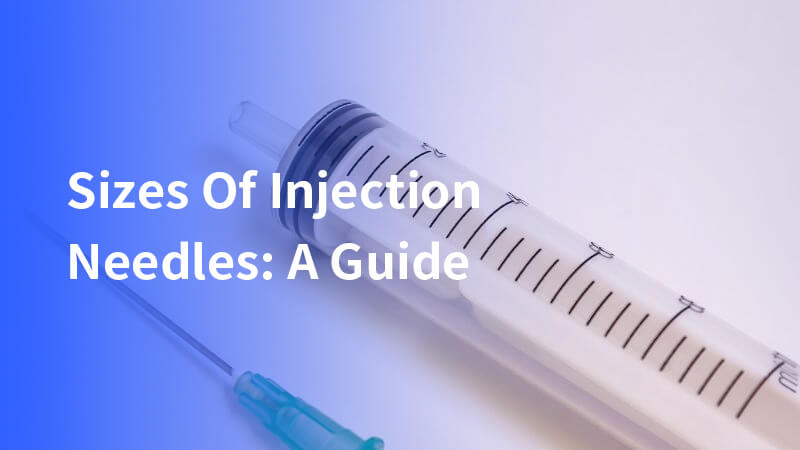Syringes now come with many sizes of injection needles, and how big is a needle matters when choosing the right size. Picking the right size is important. It helps to give shots safely and effectively.
In this article, we will talk about needle sizes. We will also explain other things that affect needle choice.
Components of injection needle sizes
Syringe needle size is different from syringe sizes for injections. Needle size has three parts: needle gauge, needle length, and needle wall thickness.
Needle gauge
The needle’s gauge is the size of its inside hole. This helps decide how much fluid goes through it. It also affects how comfortable the shot feels.
A smaller number means a bigger needle. A bigger number means a thinner needle. Common needle sizes are 18G, 21G, 23G, and 25G.
Needle length
The needle’s length is from the hub to the tip. It changes based on where the shot goes. Smaller people, like children, need shorter needles.
Needle lengths are usually between 0.5 and 1.5 inches. Short needles are used for shots under the skin. Longer needles are used for muscle shots.
Needle wall thickness
Needle wall thickness is how thick the needle metal is. Thicker needles are stronger and less likely to bend. Thinner needles are used to make shots hurt less. Thicker ones are used for strong injections or when more strength is needed.
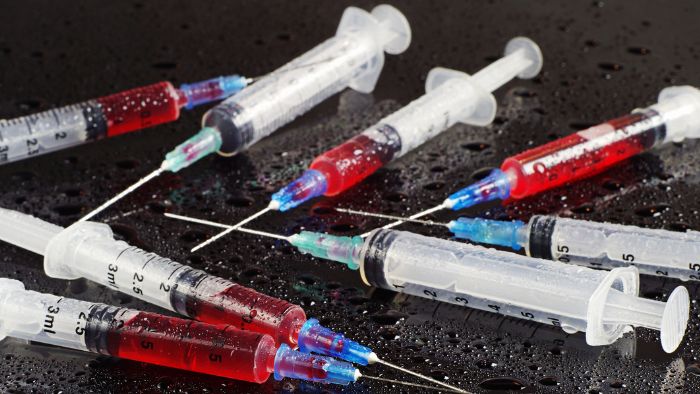
Usual needle sizes and gauges for injections
| Gauge (G) | Designated Metric Size (mm) | Minimum Outer Diameter (mm) | Maximum Outer Diameter (mm) | Minimum Inner Diameter (mm) |
| 16 | 1.6 | 1.58 | 1.62 | 1.2 |
| 18 | 1.2 | 1.18 | 1.22 | 0.88 |
| 20 | 0.9 | 0.88 | 0.92 | 0.66 |
| 22 | 0.7 | 0.68 | 0.72 | 0.5 |
| 23 | 0.65 | 0.63 | 0.67 | 0.47 |
| 25 | 0.5 | 0.48 | 0.52 | 0.36 |
| 27 | 0.4 | 0.38 | 0.42 | 0.28 |
Factors influencing injection needle size selection
Choosing the right needle size is very important. It affects how well the shot works and how it feels. Many things must be checked to keep the patient safe.
Injection site
Where the injection is given affects the needle size. The fat under the skin changes how long the needle should be.
For example, shots into muscles need longer needles to reach the muscle. Shots under the skin use shorter needles. You need to check how thick the tissue is to pick the right needle.
Viscosity of medication
The thickness of the medicine is important to think about.
Thicker medicine needs a wider needle so it can flow easily.
Wider needles, with lower numbers, are used for muscle shots and other big procedures.
Thinner medicine can use a smaller needle, which might hurt less for the patient.
Injection dosage
The amount of medicine to be injected affects the needle size. Syringes show milliliters (mL) or cubic centimeters (cc) as volume. So these measurements help docotors or nurses pick the right syringe for the dose.
Bigger doses may need a wider needle for faster delivery. Smaller doses can use thinner needles. This can give the full dose without extra pain.
Patient’s age and physique
The patient’s age and body type affect needle size. Kids or thin people may need shorter, finer needles to stay safe.
On the other hand, adults with more body mass may need longer needles to reach the right spot.
Application scenarios for different injection needle sizes
Choosing the right needle is important for a good injection. However, The needle size and length depend on the type of shot and where it goes.
Intradermal injection needle size
- Common Needle Gauge: 25G-27G
- Needle Length: 1/2 inch – 5/8 inch
Intradermal injections go just under the skin. They need a thin needle to make a small bump without going too deep.
They are often used for allergy tests and tuberculosis checks.
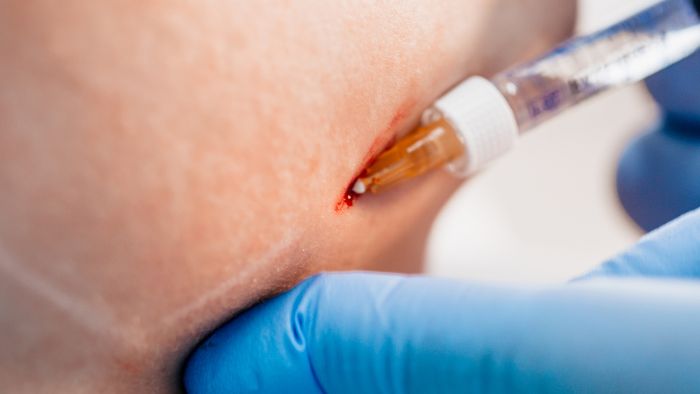
Subcutaneous injection needle size
- Common Needle Gauge: 25G-27G
- Needle Length: 5/8 inch – 1 inch
Subcutaneous injections go into the fat under the skin. They need a needle longer than intradermal ones but still short to avoid the muscle.
These are often used for insulin and other slow-absorbing medicines.
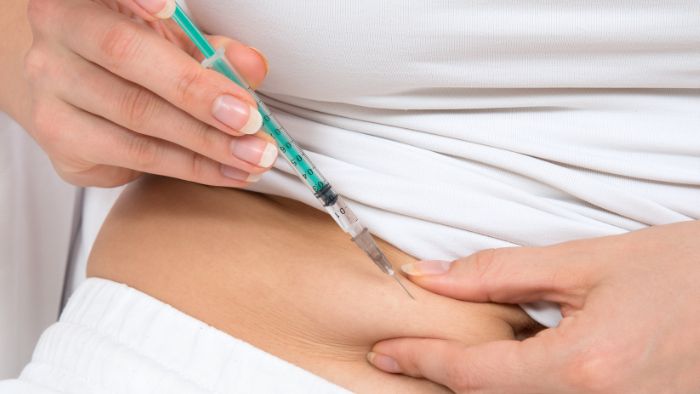
Intramuscular injection needle size
- Common Needle Gauge: 22G-25G
- Needle Length: 1 inch – 1.5 inches
Intramuscular injections deliver medicine deep into the muscle. A hollow needle and syringe are used for many types of shots.
This method needs a thick, long needle to go through skin and fat. It is often used for vaccines and medicines that need quick absorption.
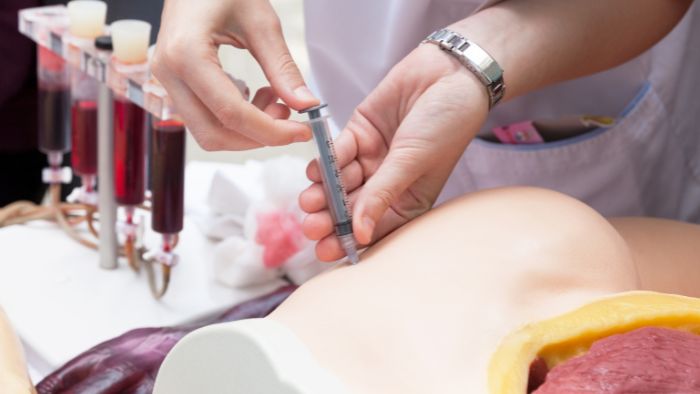
Intravenous injection needle size
- Common Needle Gauge: 18G-25G
- Needle Length: 1 inch – 1.5 inches
Intravenous injections go directly into a vein. These shots need a needle that fits different medicine thicknesses for quick delivery, and the intravenous injection needle size is crucial for this process.
For example, 14G and 16G needles are used for surgeries, blood transfusions, and high-viscosity liquid infusions. They are suitable for patients with good vein conditions and situations that require fast fluid delivery.
Thinner needles, with higher numbers, are used for shots under the skin and less thick medicines. Needles like 18G and 20G are common for regular infusions and medication injections, making them suitable for most patients.
For patients with finer veins, 22G, 24G, and 25G needles are often used. These needles are helpful in emergencies and for giving large amounts of fluids or medicine.
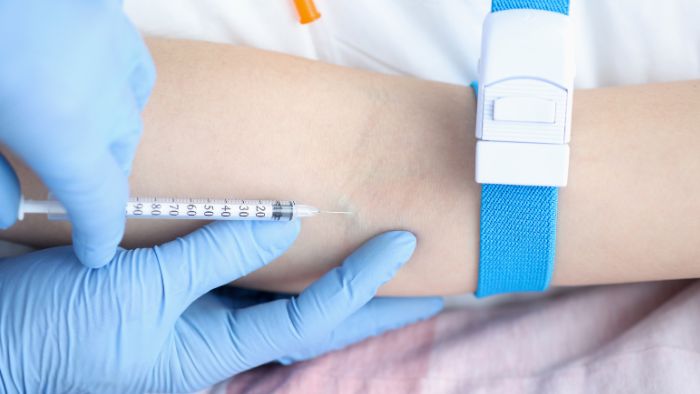
Standardization of injection needle sizes
Standardization is important for the safe use of needles. A big part of this is using color codes and following international and local rules.
Color coding
- 18G: Pink
- 20G: Yellow
- 21G: Green
- 22G: Black
- 23G: Blue
- 25G: Red
- 27G: Gray
- 30G: Light Yellow
- 32G: Clear
Color coding helps identify needle sizes quickly and easily. Each size has a specific color that doctors recognize everywhere.
Relevant standards
- ISO 9626: International standard for stainless steel needle tubing used in the manufacture of injection needles.
- ISO 7864: International standard specifying requirements for sterile, single-use needles for injection.
- GB/T 18457: Chinese national standard for stainless steel needle tubing for medical devices.
- YY 0286.1-2007: Chinese standard for sterile, single-use hypodermic needles.
These rules make sure needles are safe and good quality. Needle gauges show the size and thickness of the needle by use number(G). A bigger number means a thinner needle with a smaller hole. The right gauge depends on how thick the medicine is.
Sometimes, the syringe size must be on the label. Viallabeller makes pharma labeling machines and offers a full syringe labeling solution.
Safe use of injection needles
Using needles safely is very important to protect patients and doctors. Correct methods must be used to lower the risk of infection and injury.
Aseptic technique
Keeping things clean is very important during any injection. This means cleaning the injection spot, wearing clean gloves, and keeping the needle and syringe free from germs.
If this is not done, it can cause serious infections and problems. That’s why it is so important in hospitals.
Single-use only
Needles are made for one-time use only. Reusing them is not allowed because it can spread diseases between patients.
A new, clean needle must be used for each shot to keep patients safe and stop infections.
Proper disposal
Throwing away used needles safely is very important. Used needles should go into special sharp containers right away.
These containers are strong and labeled clearly. And they must be thrown away by the rules to keep everyone safe.
Conclusion
Knowing the sizes of injection needles and how to use them is important for safe medical care. Choosing the right needle size, including gauge, length, and thickness, helps make the shot safer and more comfortable.
Using color codes and following rules helps doctors avoid mistakes. Also, using clean tools, one-time needles, and throwing them away properly keeps everyone safe. Understanding the sizes of injection needles is key to good medical care..
Reference
Mark A. Whitaker, Particle size and shape effects in medical syringe needles: experiments and simulations for polymer microparticle injection, Journal of Materials Science: Materials in Medicine, Volume 22, pages 1975–1983, (2011), doi: https://doi.org/10.1007/s10856-011-4359-7
